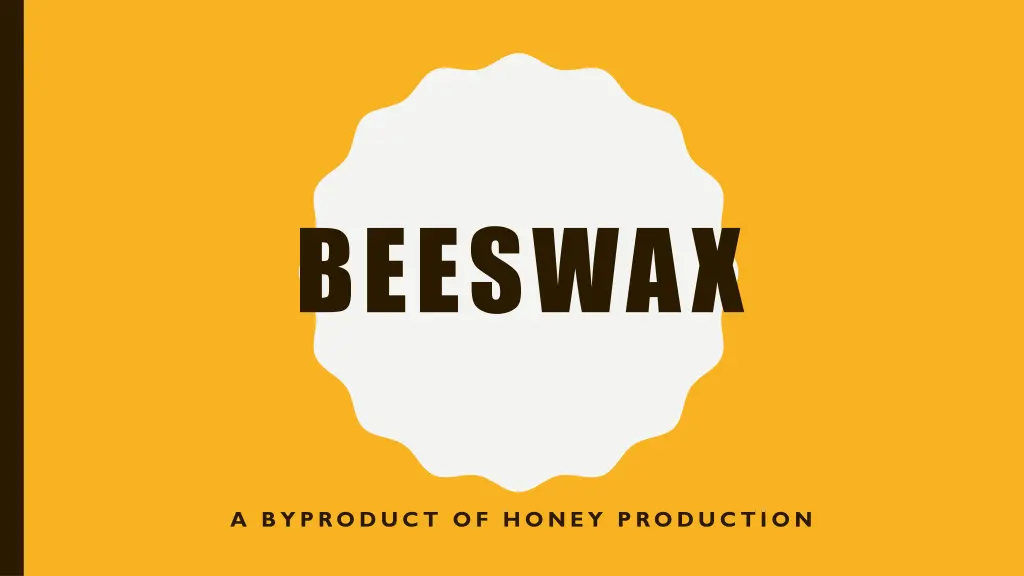
Beeswax: The Byproduct of Honey Production
"Discover how beeswax, a substance secreted by worker honey bees, is used in the honey-making process within hives. Learn about its formation, role in honeycomb construction, and harvesting techniques by beekeepers. Explore the relationship between beeswax, honey, and the hive's structure."
Download Presentation

Please find below an Image/Link to download the presentation.
The content on the website is provided AS IS for your information and personal use only. It may not be sold, licensed, or shared on other websites without obtaining consent from the author. If you encounter any issues during the download, it is possible that the publisher has removed the file from their server.
You are allowed to download the files provided on this website for personal or commercial use, subject to the condition that they are used lawfully. All files are the property of their respective owners.
The content on the website is provided AS IS for your information and personal use only. It may not be sold, licensed, or shared on other websites without obtaining consent from the author.
E N D
Presentation Transcript
BEESWAX A BYPRODUCT OF HONEY PRODUCTION
Beeswax is a substance secreted from the glands located on the underside of a worker honey bee s abdomen.
The wax is used by the bees to form cells within the hive for honey storage and to protect eggs, larvae, and pupae through the process of metamorphosis.
To form the beeswax into honeycomb, the bees chew and mold the wax into hexagon-shaped cells.
Honey bees use the nectar they gather from flowers to make honey, which is stored in the hive s cells. The bees cap off each cell with wax to prevent moisture loss.
When beekeepers harvest honey, they collect the frames from the hive and use a hot knife to remove the wax cappings.
The wax is taken to a capping tank and the frames are placed in an extractor to spin out the honey.
Heat is applied to the wax cappings, causing the honey and wax to liquify and separate. The residual honey is then filtered out and the clean wax is cooled and molded.




